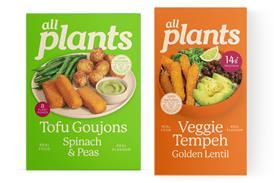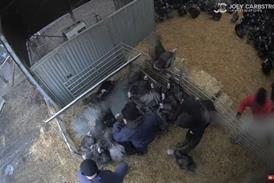But policymakers shouldn’t base all forecasts on Western eating patterns, says Tim Lang
Last week, the OECD and UNFAO published their Agricultural Outlook 2011-2020. The annual report is not known for its environmentally attuned thinking. It's from the dominant paradigm of economics. All would be well if markets were allowed to operate smoothly.
For decades, the OECD has championed cutting subsidies and the equalisation of terms of trade. FAO economists tend to follow suit, but elsewhere in the organisation voices remind policymakers to factor in tricky issues like impact on biodiversity, health, environment, and global inequalities. These are problems whose costs are rarely or only marginally internalised in the prices consumers pay for food. Eat now, forget the heart disease later.
Yet the new Agricultural Outlook gives a sober analysis: "A high degree of uncertainty persists." It expects commodity prices to drop from 2010 prices, currently higher than the politically explosive 2008 spike. And farm incomes will rise after decades of decline in real terms. But good news for (some) farmers hides declining productivity and rising energy costs. Prices will rise by 20% for maize, for example; 30% for poultry meat. By 2020, biofuels will use 13% of coarse grain, 15% of vegetable oil and 30% of sugar cane production. Food price inflation is now endemic.
As market economists, the authors' standard line is that rising population merely exacerbates the squeeze. I don't buy that pessimism. The case for eating very differently barely gets a look-in. Why is it assumed everyone will eat like the UK or the US? US and Latin American meat traders love forecasters to assume 'normal' feeding and aspirations, yet the case for not emulating Western patterns is overwhelming: less water, grain, land use, plus preventing expensive healthcare resulting from unhealthy diets.
Last week in Brussels, I listened to EU agriculture commissioner Dacian Ciolos, the most powerful man in agriculture, and EU health commissioner John Dalli. Both realise that big change is inevitable and CAP reform must address public health. It may be too late for health and environment to drive the CAP 2013 reform, but not the CAP towards 2020.
By 2020, the new world food order will be responding not just to climate change, water stress and energy crunch, but to ill-health patterns. To talk of supply and demand is to miss the point. Consumer aspirations must change.
Last week, the OECD and UNFAO published their Agricultural Outlook 2011-2020. The annual report is not known for its environmentally attuned thinking. It's from the dominant paradigm of economics. All would be well if markets were allowed to operate smoothly.
For decades, the OECD has championed cutting subsidies and the equalisation of terms of trade. FAO economists tend to follow suit, but elsewhere in the organisation voices remind policymakers to factor in tricky issues like impact on biodiversity, health, environment, and global inequalities. These are problems whose costs are rarely or only marginally internalised in the prices consumers pay for food. Eat now, forget the heart disease later.
Yet the new Agricultural Outlook gives a sober analysis: "A high degree of uncertainty persists." It expects commodity prices to drop from 2010 prices, currently higher than the politically explosive 2008 spike. And farm incomes will rise after decades of decline in real terms. But good news for (some) farmers hides declining productivity and rising energy costs. Prices will rise by 20% for maize, for example; 30% for poultry meat. By 2020, biofuels will use 13% of coarse grain, 15% of vegetable oil and 30% of sugar cane production. Food price inflation is now endemic.
As market economists, the authors' standard line is that rising population merely exacerbates the squeeze. I don't buy that pessimism. The case for eating very differently barely gets a look-in. Why is it assumed everyone will eat like the UK or the US? US and Latin American meat traders love forecasters to assume 'normal' feeding and aspirations, yet the case for not emulating Western patterns is overwhelming: less water, grain, land use, plus preventing expensive healthcare resulting from unhealthy diets.
Last week in Brussels, I listened to EU agriculture commissioner Dacian Ciolos, the most powerful man in agriculture, and EU health commissioner John Dalli. Both realise that big change is inevitable and CAP reform must address public health. It may be too late for health and environment to drive the CAP 2013 reform, but not the CAP towards 2020.
By 2020, the new world food order will be responding not just to climate change, water stress and energy crunch, but to ill-health patterns. To talk of supply and demand is to miss the point. Consumer aspirations must change.













No comments yet